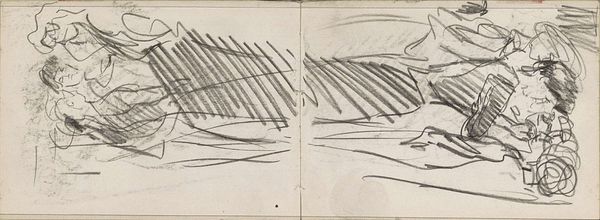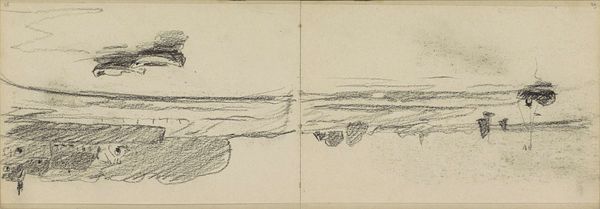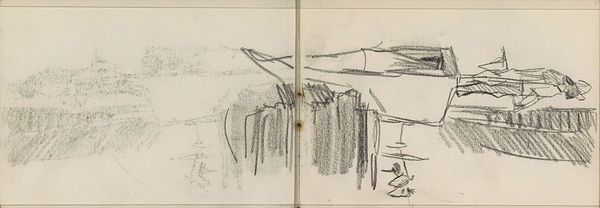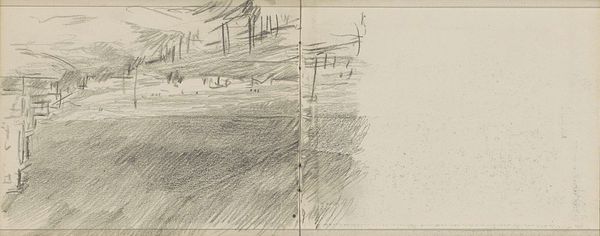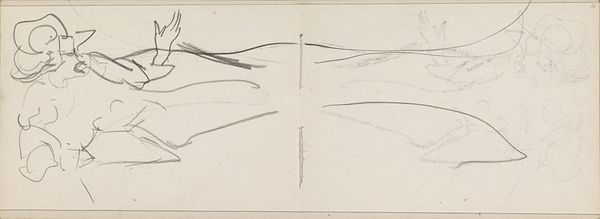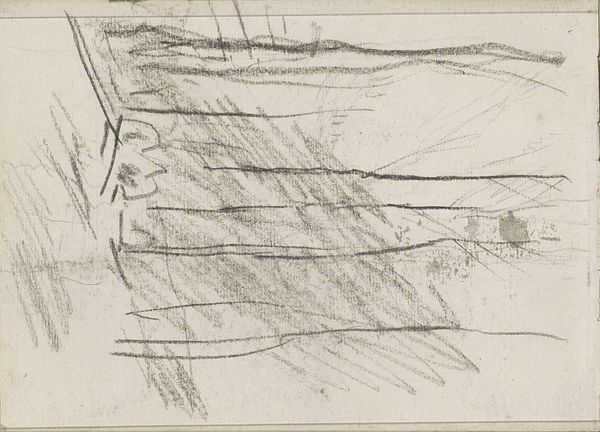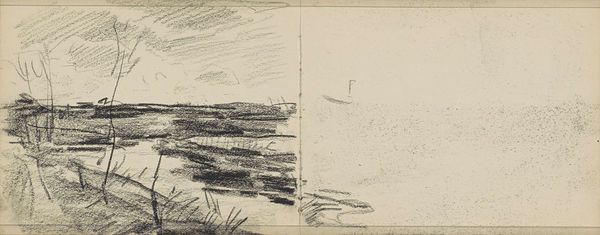
#
amateur sketch
#
light pencil work
#
personal sketchbook
#
idea generation sketch
#
sketchwork
#
ink drawing experimentation
#
pen-ink sketch
#
sketchbook drawing
#
sketchbook art
#
initial sketch
Copyright: Rijks Museum: Open Domain
Curator: At first glance, this looks like an intimate, fleeting glimpse. There's a raw immediacy to it. Editor: Indeed. What we’re observing here is "Two Women" by Isaac Israels, likely dating between 1887 and 1934, part of the Rijksmuseum's collection. It's a pencil sketch across a sketchbook spread. Curator: The use of line is particularly striking, isn't it? Loose and gestural, yet capturing something essential about the figures. There's a diagonal pull from the upper left to the lower right that holds the composition together, despite the sketch's seemingly casual nature. Editor: It resonates with Israels’ involvement with the Amsterdam Impressionism movement, capturing everyday life. Sketchbooks were crucial; many artists, including Israels, employed sketchbooks to capture fleeting moments, rendering scenes of women both in informal settings as well as during their leisures. Curator: Yes, I see the immediacy linking it to Amsterdam Impressionism, but on the level of composition, the spatial relationships are what command the reading; where the lines overlap, and how they create shading. Observe the distinction between the clear details on the woman's face, contrasted with the broad strokes describing the drapery. Editor: Considering the historical context of Israels' oeuvre, the positioning of these women, and their likely social standing are of utmost relevance. How do they perform or negotiate gender expectations? It's a telling glance into the leisure life afforded to women of particular standing at the time. Curator: I see it also, not merely a sociological document but as a sophisticated handling of value and texture within a limited tonal range. Editor: By showcasing these preliminary explorations, museums demonstrate the intellectual journey underpinning artistic creation. This promotes broader dialogues around accessibility within artistic establishments. Curator: Looking closer, I find that, in itself, a worthwhile aesthetic experience—it makes us see in a very distilled manner how much impact is conveyed through this deliberate arrangement of marks. Editor: Absolutely. Reflecting on it, I think appreciating these artworks goes beyond aesthetics. It is about understanding the social role art institutions have to play to become representative.
Comments
No comments
Be the first to comment and join the conversation on the ultimate creative platform.
